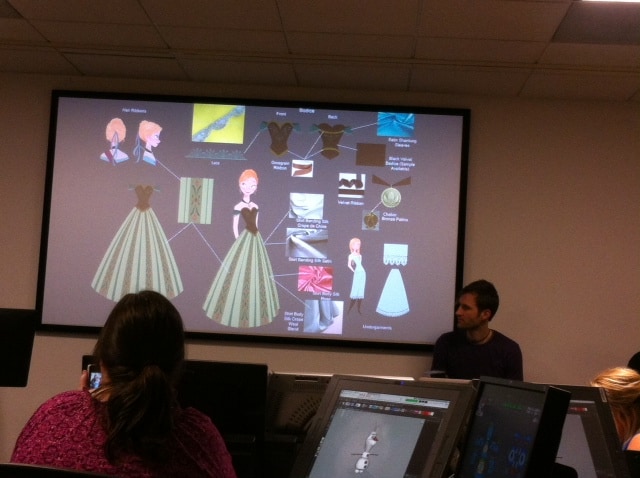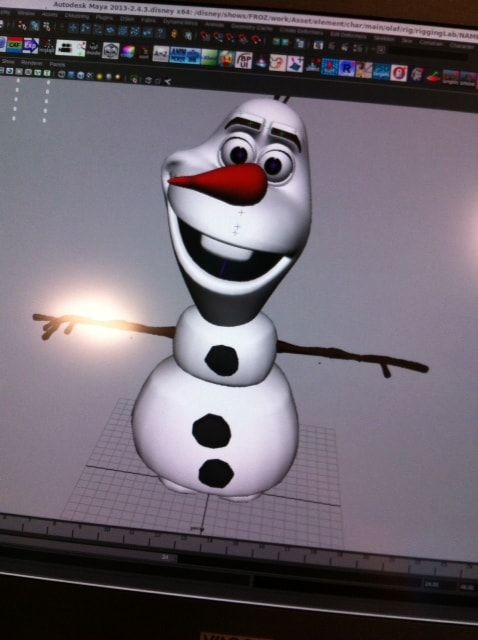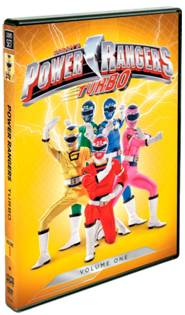FROZEN Rigging Team: I Will Never Look at Animated Movies the Same Again
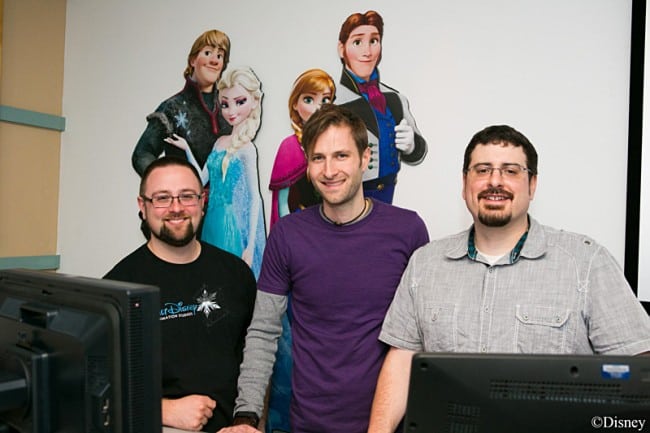

FROZEN Rigging Team: I Will Never Look at Animated Movies the Same Again
While we were in LA for the #FrozenBluray and #PirateFairyBloggers event we were lucky enough to meet the Rigging Team. From Left to Right: Character TD Supervisor Greg Smith, CG supervisor Frank Hanner, and Character TD Supervisor Keith Wilson. All three of these guys were so informative and willing to help us when it came to trying out some repositioning of Olaf. (I say repositioning because well that is about as far as I got with it.)
Things I realized that I didn’t think of before:
Did you realize what goes into the making of an animated movie? If you have watched FROZEN, you might not have realized how detailed the strands of Elsa and Anna’s hair styles were. You also might not have noticed how their dresses flowed in the movements; or how Anna’s didn’t in one scene. After visiting the rigging lab and watching the FROZEN again on DVD, I had such a new appreciation of their jobs. Olaf as ‘simple’ as he seems, has many ‘human’ like facial expressions, his hair moves, his body, and nose end up in different areas at times.
Here is the amazing information they shared with us which honestly goes VERY indepth (but is very interesting) OR you are welcome to watch Silvia’s (from Mama Latina Tips) Youtube video : Thank you Silvia!
Also I have tried to ‘bullet’ key points, but again there was so much information that it was hard to pick what was most important. Make sure you go to the end and see my Olaf.
)
Keith : My name is Keith Wilson, I’m the character simulation supervisor on the show.
Greg : And I’m Greg Smith, I’m the character rigging supervisor on the show.
Frank : But anyway, so talking today about the work of our character T-D’s. So these are the people responsible for building the character rigs on the show. They also build all of the simulation rigs of the clothing and the hair motion. And they also run technical animation, which is sort of the post animation simulation step, as well as the final animation cleanup.
So as we’re talking about these things, you know, we’re going to start off with rigging, and we realize that rigging is a term maybe not everyone is familiar with. So what exactly is it? And honestly the clearest way we found to explain what is rigging is to show an example of a character without rigging.
- So without rigging our characters are nothing more than digital sculptures, they can’t move at all. So it really is the riggers job to bring them to life. And they do that by building skeletons for the characters. They then construct a way to attach the muscles and the skin. And finally they build a set of animation controls that really allow the animators to push and pull a character around through a giant range of motion. When we look at the faces, it’s not just thrust motion. The character riggers are responsible for sculpting the details, the shapes that you see in performance.
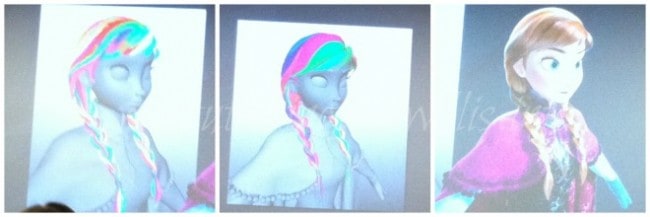
- Above is the progression they are speaking about. I realized I didn’t have a photo of the characters ‘without’ their bones, but when they don’t have them- they would just fall down.
Frank Continues:
So getting the way the mountain carter moves to behave just right, or the shape of the sheep as she smiles, or maybe the curves and the brows, a very different set of expressions. Another rigging challenges we had on Frozen is not just those details in the main characters, we also had an entire kingdom to rig.
- On Frozen we have more characters than we’ve had in any of our other Disney films. We have three hundred and twelve characters making up that kingdom.
- On the clothing front we have a really staggering number, I think two hundred and forty five cloth rigs. That’s two hundred and forty five unique simulated costumes. It is more than double the amount of all of our previous films combined.
- We have a ton of building on this movie. Plus our sixty three hair rigs. Something that made the hair rigs particularly challenging is really that design and the intricacy with which they’re put together. So then obviously as this is a very Scandinavian, Norwegian set film, we have a lot of traditional Norwegian hairstyles represented.
- We have a lot of braids, we have a lot of buns, and those are actually difficult to handle in CG, so difficult in fact we ended up having to create a new piece of software that we call Tonic, really dealing with constructing our hairstyles. We got the ideas for how we work in time by looking at some of the early drawing designs and the early model tests of braids in this case, and really looking at those braids, we realized our model can really wind those shapes together really well.
The notion of working with clumps and volumes of hair works much better than the, than the traditional sort of digital brush and digital combing mechanisms. In fact those would just digitally comb the braids right out. So Tonic gives our artists a way to really manipulate the different clumps and chunks of hair and wind them into these intricate shapes. It also gives them, the details to get down to if they need to per strand, per hair level, and we see that represented very well in final renders.
Including the final renders when our characters have a bad hair day, you know, in this instance, we might not have the braids, but our directors still had an incredibly detailed idea of just how messed up this hair should be and how it should fall across her face. Tonic gave our artists the ability to really construct this exactly to the director’s liking. When we look at one of our characters and they do work really well, when everything comes together, they just look beautiful with Elsa here showing off the hairstyle.
With really rich voluminous hair see that she got some great rigging going on, you see the motion and the simulation in the hair.
Funny little tidbit on Elsa. She has four hundred and twenty thousand hairs on her head. That’s about four times more than an actual person has. The average person only has about a hundred thousand hairs. So she’s got way more than that. And then as I was counting hairs, I also looked back to some of the other characters we’ve made. And you might remember our last famously locked princess, Rapunzel. Now Rapunzel had really long hair, but she only had about thirty thousand hairs on her head. I was surprised too, I thought it was more than that. But compared to Elsa she’s a little on the thin side. Anyway, with that I’m going to turn it over to Keith, who’s going to talk more about the costumes.
Keith : As Frank was saying , the numbers, the volume of simulation rigs we needed to set up was, was a real challenge, as was the complexity of the castings themselves. Mike Channel pulled from a wide range, to design the costumes.
Some being formal wear from the mid-eighteen hundreds and all the way through, Norwegian Boonag which is folklore costumes in Norway. All of the dresses have foundation garments that mostly- many including, pantaloons, petticoats, under skirts and over skirts, so they’re very layered complex outfits, and highly detailed.
Mike on the character design team, would give us one of these per character basis, we call a call out sheet in which they’re indicating the types, the types of materials they’d like, as well as details such as pleats. Where they want the pleats placed and the type of pleats.
Anna’s intro dress had box pleats and Mike was very specific, Box Pleats. So when we started seeing these designs, we realized we needed to take a much more real world approach than we previously had due to the construction of these garments. So we worked with a software team to allow the sim artists to pass some information to the software that would allow us to get fabric correctionality, much like real world fabric. That allowed us to simulate things like sheer and modeling in a much wider range than we’d had previously.
Here’s an early test, kind of again, demonstrating a more real world approach, how would we box pleat a dress in 3D, and you can see Frank put together kind of showing, a sheet of fabric being box pleated and wrapped around Anna. So we had the software that could allow us to simulate a much wider range and we could capture the details the art director was looking for, how did it play out in shot work, and I apologize for the draft frames we’re having to- show the keynote group.
This is an animation that Tony Sneed did, and you can see the dress is kind of just following her, it’s a cone that’s kind of bound to her, it doesn’t move around at all. He’s indicated how he would like the dress to perform, and then Frank would draw all this. What’s the animation and what’s happening with their performance is accomplished, we’d run their animation through what we call auto sim and it literally is a just- it just automatically installs a sim and runs it. You can see the result is not necessarily what we would want. The dress is kicking up in her face, it’s getting stuck on her, it’s creating unpleasing shapes.
So the tech end department will use indirect methods like fields which you can see, this large cylinder and things like constraints that are animating on and off throughout this, sequence, as well as colliding objects, to really help coax the fabric into the performance that we’re looking for. In the final shot, well, you’ll see, Anna happily skips along and her dress really helps enhance the performance, that she is kind of jauntily bounding through marketplace, as well as the simulation of all the background characters adding a level of richness that we hadn’t had in previous films.
For the sequence in which she was jumping in front of the paintings kind of really helped showcase that. But in all of our shots we really go after visual appeal, clarity of shape with the simulation. In addition to the costumes themselves, Frozen takes place in a winter wonderland
We needed a way for the artists would visualize wind. So we created custom fields that allowed them to visualize pre-sim what the wave length of the wind was going to be, the frequency,the magnitude.
Greg : So in addition to kind of balance simulation, we run, in the tech end, one of the goals too is to bring more of that kind of dynamic motion, overlapping motion earlier in the process. Bringing in the animation so the animators can clear the performance, while seeing things moving kind of in a, in a more dynamic way. So on Frozen we developed what we call Flourish, which allows animators to have simple overlapping motion to things, so we don’t have to do it by hand, in the performance.
- One of the places where we ended up using this a lot is actually on Olaf’s hair, the sticks that make up his hair. On the top, we can see, that they’re not really moving at all. They’re just really laying just on top of his head. On the bottom they have this little bit of extra playful bounce to it.
- Speaking of Olaf, Olaf is a really fun character for us on this show. In rigging we have to balance the artistic appeal with a character so it doesn’t have a fish shape or a smile or a frown.
- So that’s got to do with a very technical, how you make controls that are easy for animation to use. Olaf presented quite the challenge, what does this old man really look like when he’s smiling or frowning and you know about a character. Also what do we do with this fellow when his nose falls off or melts, or assemble himself in different ways, right. So these were all challenges we had to figure out from early on and say okay, in rigging, how do we present animation a set of controls they can use to really have some control over Olaf.
- So we built a tool for them we call Spaces, which very simply allows them to change the relationship with different parts of Olaf’s body. So an arm, instead of being stuck into the chest would be stuck into the head. Or if it could be added to the head. Or the head could be pounded onto the hips, something like that. Well when we were starting we didn’t know how much we were going to use this, how much is actually going to appear in the film, until they started doing some initial tests.
- The Olaf above is my Olaf . I always prided myself in my ‘web design’ talents, and after that day, I decided that I never did animation, design or anything of the like. It took me all of the time we were able to work on it (using 2 computers) to come up with this. Before I got to this point, poor Olaf looked like he had lost all the muscle movement in his face on one side. I was able to fool around with his right arm/fingers, as you can see.
More on Olaf:
- You know, Olaf was built over the course of probably about two and a half months. Then it gets into animators’ hands, and they start working on him on, on their individual shots. So every shot you see in the movie, like every time the camera cuts.
- So, you know, you’ll see Olaf on screen for maybe five to ten seconds at a time. That five to ten seconds will take an animator on average probably about one and a half to two weeks to put it together. So yeah- if you take your time and don’t try to figure it out all today, it’s a lot easier [LAUGHTER] You’ve just been thrown into the deep end and see what happens.
So the next time you watch FROZEN or anyother animated Disney movie. Just think of the work put into the detail, movement and expressions (and much, much more) of each character.
I really enjoyed my time learning all there was to learn about the process that the Rigging Lab does.
What's Your Reaction?
Newly middle-aged wife of 1, Mom of 3, Grandma of 2. A professional blogger who has lived in 3 places since losing her home to a house fire in October 2018 with her husband. Becky appreciates being self-employed which has allowed her to work from 'anywhere'. Life is better when you can laugh. As you can tell by her Facebook page where she keeps the humor memes going daily. Becky looks forward to the upcoming new year. It will be fun to see what 2020 holds.

